Maretron DCR100, NMEA 2000 switching
Maretron’s new DCR100 DC relay box will not create a true distributed power system because it doesn’t replace conventional circuit breakers. But it can give you some of the features — like extending switching to an N2K network and beyond, and the ability to measure and alarm current flows — and it seems like it would it be easy to retrofit to existing boat panels…
As suggested in the install diagram below, the $395 DCR100 module contains six solid-state relays, each able to handle a load up to 10 amps, and it sits between your circuit panel and whatever resistive or inductive loads — lights and motors — you’d like to control via N2K. In fact, I’m pretty sure it was a prototype DCR100 controlling the engine room light in Flordia that I got to switch on and off from Maine via an N2KView app running on an iPad. Of course that sort of remote control requires a boat-network-to-Internet connection like the Maretron IPG100 discussed in February (or maybe the Chetco SeaSmart, or a future version of Garmin’s just introduced GDL 40), but I can imagine lots of uses for the DCR right on a boat.
For instance, I’d like flying bridge control of Gizmo’s exterior lights — particularly the bright LED floods, which can instantly and effectively say “Yo, I’m a boat over here in the dark.” With the DCR100 and a networked display or switch panel that can run it well, I could not only get this ability without running more wires, but I could possibly reduce the wiring mess at the lower helm, and I could be informed if, say, a running light burned out, causing that circuit to draw less juice…
Naturally the DCR100 can integrate nicely with Maretron’s own N2KView Platinum monitoring and control software, or a DSM250 display, but its support of standard NMEA 2000 messages is confusing. According to the manual, the module does transmit the Binary Switch Bank Status message (PGN # 127501), but it uses a proprietary PGN to report on each load’s current (and another proprietary PGN with lots of configuration options). And there’s no mention of the Switch Bank Control PGN (127502), which is described in the NMEA database as “universal commands to multiple banks of two-state devices.”
Well, it turns out that the NMEA is still working on a complete set of power-related PGNs and also that manufacturers like Maretron and EmpireBus (discussed here recently) are using the Command Group Function (PGN 126208) to command the Binary Switch Bank Status PGN 127501 to the desired on or off state. Maretron CEO Rich Gauer tells me that this is a more intuitive and efficient technique supported by NMEA and that the Switch Bank Control PGN was “created by accident not realizing that commanding the existing Status PGN 127501 was the preferred method.”
At any rate, it is possible for devices or programs not developed by Maretron to run a DCR100 switching module, though I’m not sure any exist yet and there are niceties like system labeling (what a switch does, for instance) that Maretron seems way ahead on. Incidentally, use of that Command Group Function 126208 is why Maretron devices can now configure certain Airmar sensors (hurray for the cooperation between these two competing companies, PDF details here).
Maretron also just came out with the NBE100 Network Bus Extender, which seems quite like the N2K Bridges we discussed in December. And indeed it does isolate impedance issues and power between two or more backbone sections — and can thus provide redundancy and increased reliability — but Maretron is emphasizing the fact that such a bridge can also double the permitted size of a NMEA 2000 network in terms of backbone length, cummulative drop lengths, and number of nodes. Or two NBE100s can triple it! Some backbones are going to need extending once power — either full on distributed style or just switching — is added.


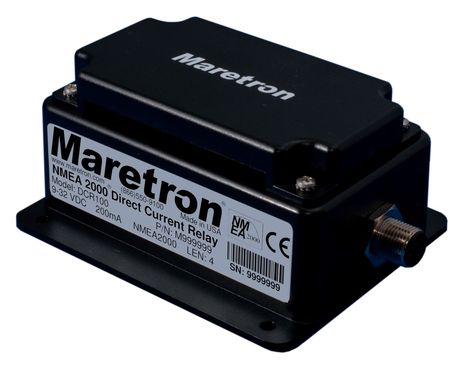
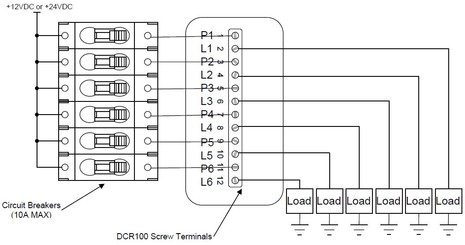
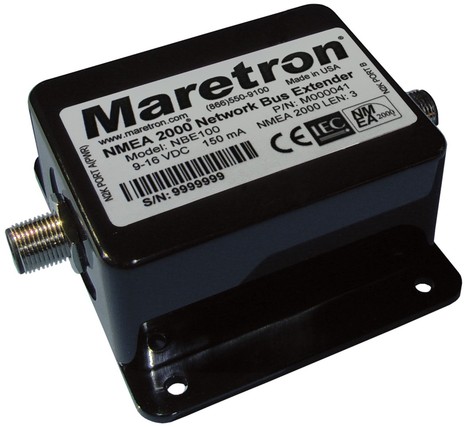

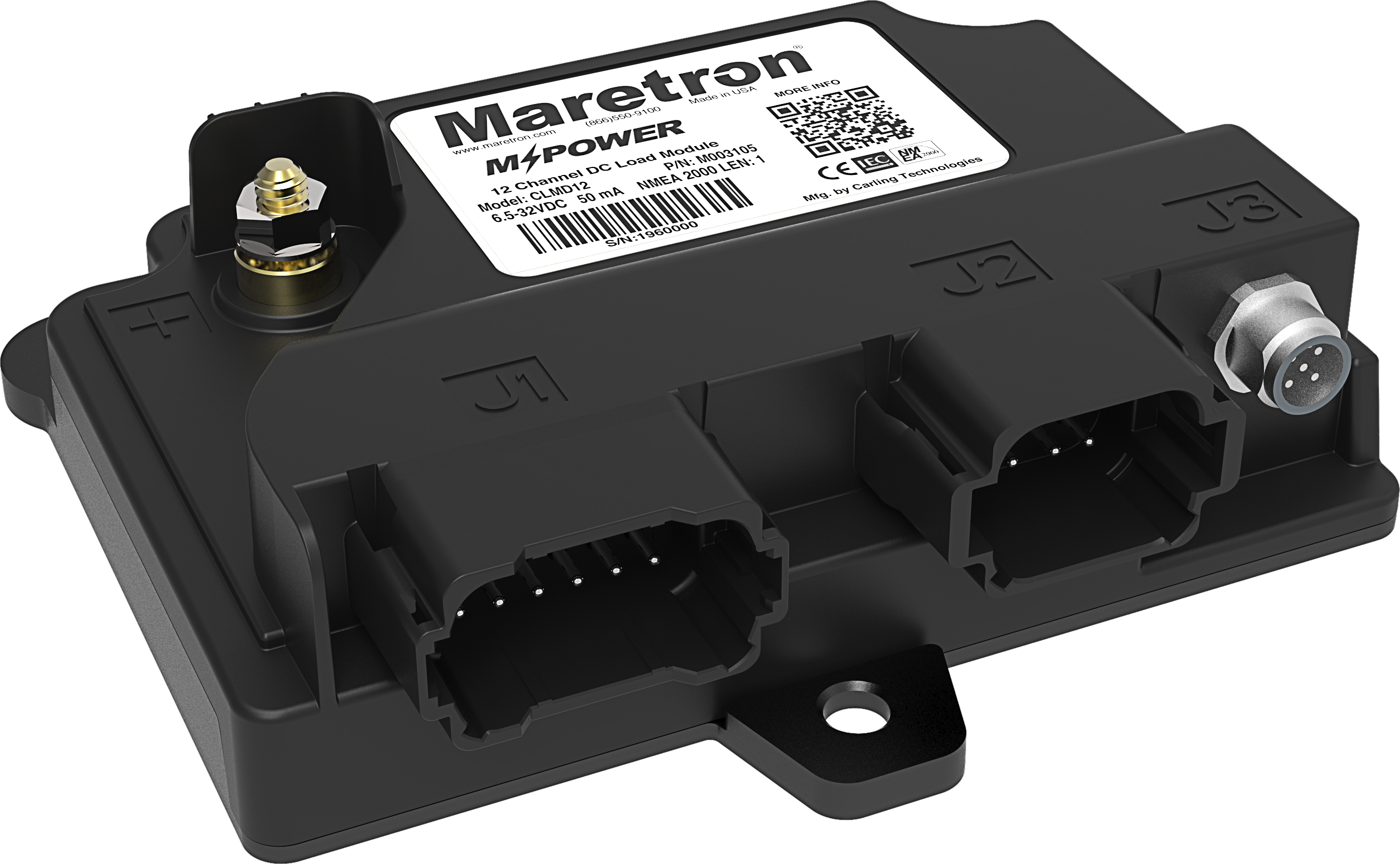
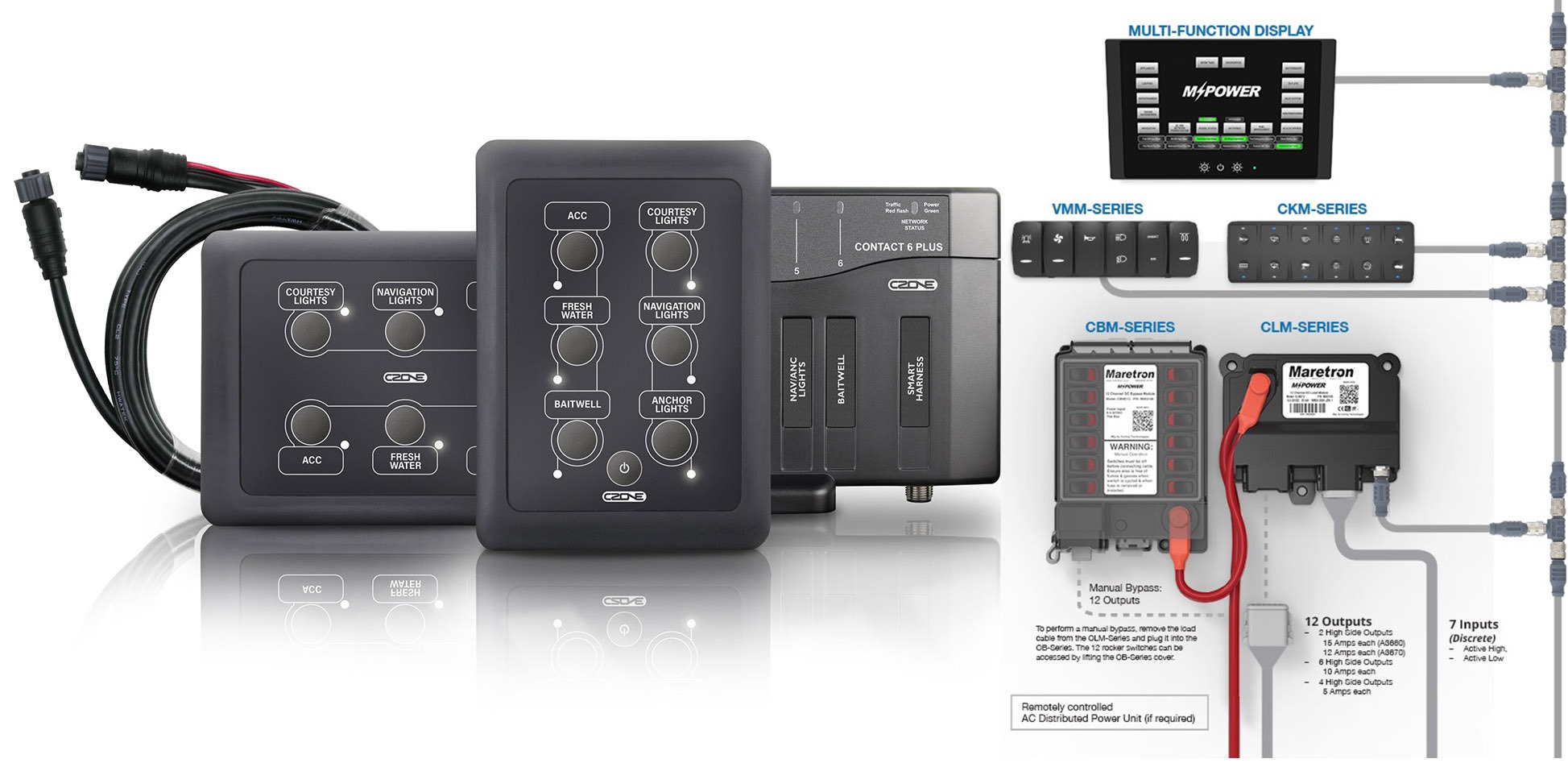








PS: I think that Digital Switching Systems has had an N2K DC relay module for some time, but I can’t find it on their site:
http://www.digitalswitchingsystems.com/
DSS seems more oriented to production boatbuilding than custom or retrofit jobs and, in fact, just put up a YouTube video about its partnership with Lumitec (LED lighting):
http://www.youtube.com/digitalswitching
I am bit confused here – if it can measure the current and switch the load, why can’t it emulate the circuit breakers in software?
Tim,
It’s inappropriate to rely on software to perform the function of a circuit breaker. If anything happened and there was a delay, even slightly, a dead short could cause serious damage.
Still a job best left up to a physical circuit breaker.
I’d like to expand on that. There is a silicon circuit breaker known as a MOSFET that is the heart of DC distributed power systems. I’m not sure what’s in the DCR100 but while it shares some MOSFET features like the ability to sense the current passing through, it does not seem to have the same circuit protection abilities, not to mention the fused back-up that exists on all distributed power modules I’ve seen.
It’s good that Maretron have started down this path finally (it’s been a long time coming), but it seems to me that they’ve taken the “half pregnant” approach.
Without having looked at this product in detail, it looks like you need to switch all of the physical circuit breakers on in order to be able to use the remote or secondary switching and measurement options offered by this (or else run down to the main switchboard whenever you want to use a distributed switch, which would be pointless).
It seems to me that this would lead to a setup very similar to a house, where you have a hidden central breaker panel with the breakers always on, and individual control switches near the point of the load. This has some merits, but I think it misses at least one of the main points of a distributed power system: reducing that complicated wiring loom and structure.
I really disagree with the statement that it’s inappropriate to rely on s/w and distributed systems to do the job of a circuit breaker, but if that’s the philosophical approach that Maretron is taking, maybe they should concentrate on developing more of their excellent monitoring and reporting units and leave distributed power to others.
Maybe a bit harsh (and I don’t mean any offense to Maretron – I use their displays and other components), but I’m really struggling with the direction that this component has taken.
No,w the buss extender is a totally different story – well done on that. I am definitely of the opinion that building in redundancy in an N2K network using bridges and extenders is an essential element of good network design.
Cheers,
Paul
The deal-breaker for me is the need to spend $2,500 on the “Platinum” version of Maretron’s N2KView software in order to switch on a few circuits. I’m not buying until I find a vendor whose control software carries a reasonable price.
Firstly there ate several software reprogrammable circuit breakers in the industrial marketplace. ETA make a fair range of them. It’s an established product. BTW Ben MOSFETs or more likely IGFETs are the switching elements but not in themselves current sensing , but it’s a very easy add on circuit wise
The big confusion with this products and others is how they fit into a system. How do you activate them. Simrad have gone se way by integrating Support for BEPs C-Zone but there’s no consistent non- proprietary way as yet
Dave